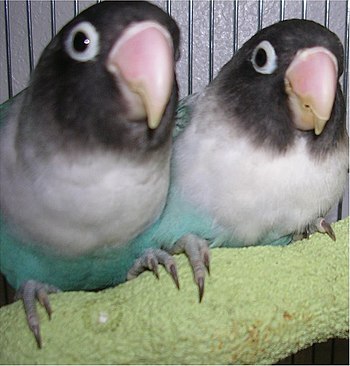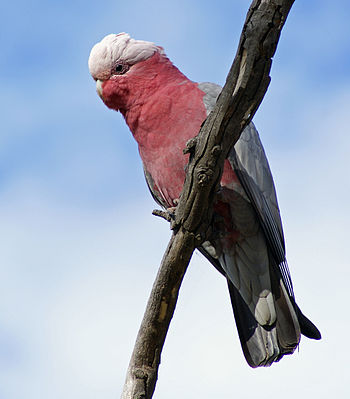 |
| Red Tailed Black Cockatoo - Photo by russellstreet (cc) |
1. You may have bought your cockatoo a cage which looks as though it is quite impenetrable. However, be aware that your cockatoo's intelligence can be applied very easily to the mechanics of the cage door mechanism. These birds will easily take apart items, demonstrating an astonishing degree of dexterity as they do so. They seem to have almost as much dexterity in their feet as we do in our hands, and it is marvelous to watch.
However, marvelous though it may be to watch your cockatoo delicately remove the pins and screws from the cage mechanism, it is not so endearing to watch your precious bird flying around the house, causing chaos, destruction and quite possibly injuring itself in the process. To this end, make sure that you provide your cockatoo with plenty to do, toys and activities to keep it entertaining, and of course as much of your own time and attention as you can. This will help prevent your cockatoo from becoming bored and exploring other means to get your attention!
2. Are you fully aware that Red Tailed Black Cockatoos can live longer than you? Many people buy pets as relatively short-term commitments. Not that they want to, because most pet owners would gladly spend their whole lives with their animals. But the reality is that the vast majority of cockatoos will outlive their owners by many years! Cockatoos can easily live between fifty and seventy years and depend on how old you are when you buy your bird, you may well find that you have a companion for life.
This is a huge commitment, and you will need to think carefully about the chances of any major life changes you have in mind, such as marrying, starting a family, moving away, career changes and such like. Make sure you don't find yourself committing to a cockatoo that then becomes an object of resentment in the future. It's also worth bearing in mind that you will usually need to make some provision for its care after you fall off your own perch for the final time.
3. Don't just feed your cockatoo seeds. Many owners believe that birds eat seeds or insects - period! Imagine if you were owned by a bird, and it fed you nothing but burgers and fries for half a century because they were the only foods they thought you would eat!
Just like you, your cockatoo thrives on variety, and this applies just as much to the world of food as anything else. Use pellets, fruit, vegetables and even extras such as eggs, bread, and crackers. There are some foods which are bad for them, and in even dangerous in certain cases. Avocados, chocolate, caffeine products, alcohol are all fatal if ingested and should be avoided at all costs.
4. All birds need a good calcium-rich diet, but cockatoos require a much higher dosage. If you use a pellet based supplement then in most cases, if this is specifically targeted at the cockatoo family, it should already include a good calcium supplement. However, check this out for yourself, and make sure that you provide your bird with foods which do have high levels of calcium to keep it in tip-top condition.
5. Always make sure that your Cockatoo has a ready supply of clean water available at all times. However, water which may look perfectly clean and drinkable to us can contain toxins which are harmful to Cockatoos. In fact, cockatoos have a tendency to be much more seriously affected by these toxins than other birds or animals. A good tip is to use a water filter to purify the tap water before providing it to your bird. Even better is to provide bottled water if you can manage it.
6. Always keep an eye on your cockatoo's nails. If you notice them getting too long, then ask your vet to have a look and show you how to trim them yourself. Don't try it without having been shown first as you can very easily injure your cockatoo. Always provide rough landing areas such as sand or concrete to help keep the nails in check-similar to cats using a scratching post.
7. Make sure your Cockatoo's air is the cleanest it can be. Using a high-efficiency particle arresting (or HEPA) air purifier virtually eliminates dander, feathers, dust, and other particulates that can clog your bird's airways and that can also carry potentially fatal airborne viruses and bacteria. Clear air passages mean a healthier bird and increased lifespan.
Giving careful and thoughtful attention to these 7 areas of care will have earned you the right to have your Cockatoo share your home and your life.
By Debbie Davis
An excellent HEPA air purifier to remove airborne pollutants from your bird's air is offered by PurerAir.com-- the Bird Dander Purifier See it now at http://purerair.com/bird_dander_air_purifier.html
Article Source: EzineArticles
|
















